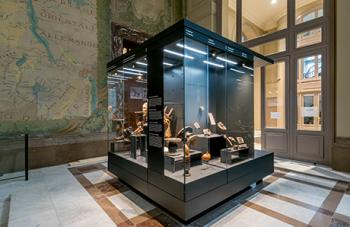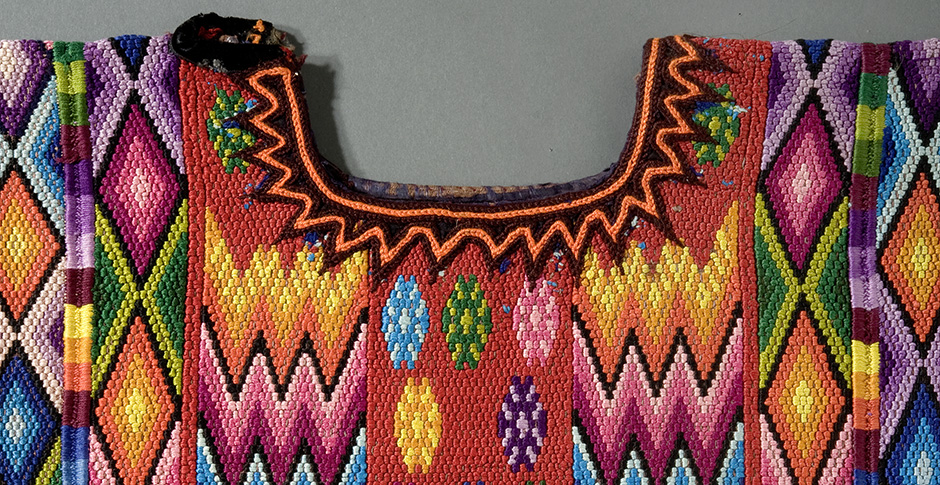Category Archives: tentoonstellingen
16 juli 2021–9 januari 2022: SEHNSUCHT JAPAN, REISEERINNERUNGEN DES MALERS WILHELM HEINE. Museum Fünf Kontinente, München
9 november 2021-6 maart 2022: Menselijke Zoo Humain. MRAC Tervuren
Vanaf 26 juni 2020: Memory. Momente des Erinnerns und Vergessens. Museum der KUlturen, Basel.
Wir alle kennen Theater. Populär und weit verbreitet ist das Theater, das mit Figuren gespielt wird. Die Ausstellung zeigt Stabpuppen, Schattenspielfiguren, Handpuppen und Marionetten aus Asien und Europa. Die Geschichten, die aufgeführt werden, dienen nicht nur der Unterhaltung: Die Figuren bieten Identifikationsmöglichkeiten und die Stücke erklären die Welt. Die Puppenspieler können belehren, herrschende Zustände kritisieren und den Menschen Handlungsmöglichkeiten aufzeigen.
ongoing: Weergaloze kunst. Koninklijk Museum voor Midden-Afrika, Tervuren

In deze zaal geven vier vitrines een veelzeggend overzicht van de artistieke productie van maskers, beelden, ivoorsnijwerk en gebruiksvoorwerpen. De verzamelde stukken komen bijna allemaal uit Congo en dateren voornamelijk uit de 19e en vroege 20e eeuw.
Andere vitrines kaarten specifiekere thema’s aan, met een beslist kunsthistorische insteek.
Sommige vitrines moeten bijvoorbeeld de Afrikaanse kijk op schoonheid
beter belichten. Andere ruimtes bieden dan weer inzicht in de manier
waarop de Belgische aanwezigheid in Congo bepaalde aspecten van de
productie en verkoop van beelden heeft beïnvloed.
Op nog een andere plek in de zaal reiken onderzoekers een alternatief
aan voor de etnografische studie van materiële Afrikaanse culturen, door
de discipline van de Afrikaanse kunstgeschiedenis uit te diepen.
Belgische pioniers als F. M. Olbrechts (voormalig directeur van het KMMA) leverden een aanzienlijke bijdrage tot die benadering, die tot een stilistische en iconografische analyse van de Afrikaanse kunst heeft geleid, maar vooral ook oog had voor de kunstenaar, de mens achter het voorwerp.
Tot 31 december 2023: Things that matter. Tropenmuseum, Amsterdam.
De objecten in Things That Matter komen van over de hele wereld en dragen verhalen met zich mee die net zo goed in Nederland van betekenis zijn. Een voorbeeld is een gevlochten mandje, afkomstig van de Marshall Islands. In de bijbehorende video vertelt Kathy Jetnil-Kijiner in dichtvorm waarom dit voorwerp zo belangrijk is voor haar cultuur en hoe deze op het punt staat te verdwijnen: de stijgende zeespiegel zal haar eiland als eerste in de Grote Oceaan doen zinken. Het mandje in de tentoonstelling is dan het laatste tastbare overblijfsel van haar cultuur. Het zet bezoekers aan het denken over klimaatverandering, duurzaamheid en cultureel erfgoed.
De tentoonstelling Things That Matter is naar verwachting 5 tot 7 jaar te zien en komt tot stand met steun van de BankGiro Loterij en in samenwerking met Museum Catharijneconvent. Campagnebeeld: David Vroom.
April 12, 2021–Ongoing: Art of Native America: The Charles and Valerie Diker Collection. Metropolitan Museum of Art
2017-ongoing: Sailors and Daughters: Early Photography and the Indian Ocean (online photo exhibition). Smithsonian National Museum of African Art, Washington DC
Sailors and Daughters reveals the expansive maritime societies of Zanzibar, the east African coast, and beyond. From the 1840s, cameras traced the international migrations of traders, sailors, sons, and daughters through Indian Ocean ports, continuing trade that dates back over five millennia. East African cities flourished as hubs of both land and sea trade routes, which extended to the central African interior, Horn of Africa, Persian Gulf, Indian Ocean islands, western India and the Far East.
The region’s intercultural ethos generated a multitude of encounters between subjects, photographers, and the global audiences who viewed the resulting images. By gathering images from scarce and little-known collections of early photographs, lithographs, postcards, and private albums, this exhibition focuses attention on a diverse cross-section of the region’s people and their cosmopolitan cities by the sea. It serves as a starting point for a larger photographic and creative visual history of the prosperous and diverse communities of the Indian Ocean world.
2017-ongoing: Currents: Water in African Art. Smithsonian National Museum of African Art, Washington DC
Water is in all of us—we need water to exist. Water is a source of food, either directly from fishing and hunting or indirectly from irrigated crops. Its currents flow through myths, metaphors, and rituals. Water’s fluidity means there are as many meanings associated with it as there are forms. Diverse and wide-ranging in material, time period, style, and intended use, the objects in this exhibition span the continent of Africa to explore the importance of water for both practical and artistic purposes.
Oceans separate continents, but their currents also connect them. Waterways deliver new ideas and luxuries. These transportation routes bring both friends and enemies.
Below the surface, water also holds powerful meaning. Water from tears can relate to the profound relationship between a mother and child or connect the spirit world with that of the living. In many parts of Africa, water makes up one part of a philosophical triad along with the sky and the earth, with water the most changeable and most traversable realm. This shifting intersection explains the influence of gods and the ancestors in daily life.
Water features frequently in origin stories. The Dogon of Mali recount tales of aqueous primordial ancestors and of a dog discovering a hidden water source during migration to a new home. The Yoruba along the Oshun River speak of a king’s daughter who was transformed into the river. Other water spirits take form as humans, animals, or a combination of both. These spirits can be protective, yet can also be dangerous if not approached properly.
The iconography of water lends itself to fluid cultural adaptation, like the foreign snake charmer whose likeness was adopted for Mami Wata, the mother of waters. Aquatic creatures worked particularly well as subjects for Akan weights representing subjective proverbs. Water imagery is also tied closely to rulers, such as in the Benin Kingdom, where the use of coral-bead regalia links back to control of oceanic foreign trade.
In their creativity, diversity, and beauty, these artworks from the museum’s permanent collection prove that water is one of most potent forces on earth.
2016 – ongoing: Myths, Animals, Spirits: Indians of South America. Museum Fünf Kontinente, München.
Myths, Animals, Spirits: Indians of South America
Central and America, extending over almost 8,000 kilometres from the southern border of the USA to the tip of Tierra del Fuego, are inhabited by people of various Indian civilisations. Among the best known is that of the Inca whose empire at its zenith around 1530 stretched 4,000 kilometres from today’s Ecuador to Chile. The exhibition focuses on splendid artefacts belonging to the Inca civilization and their predecessors, the Moche and Nasca.
Precious gold objects, puzzling ceramic vessels and artistic stone sculptures tell tales of the world of the spirits, of relationships between people, animals and plants, of struggle and war. A separate exhibit area is dedicated to the colourful textiles of weavers of the Guatemalan highlands who see themselves as descendants of the Maya. Robes and textile accessories like these were a vibrant expression of cultural identity already before the arrival of the Europeans and have remained so despite constant change to this day.


